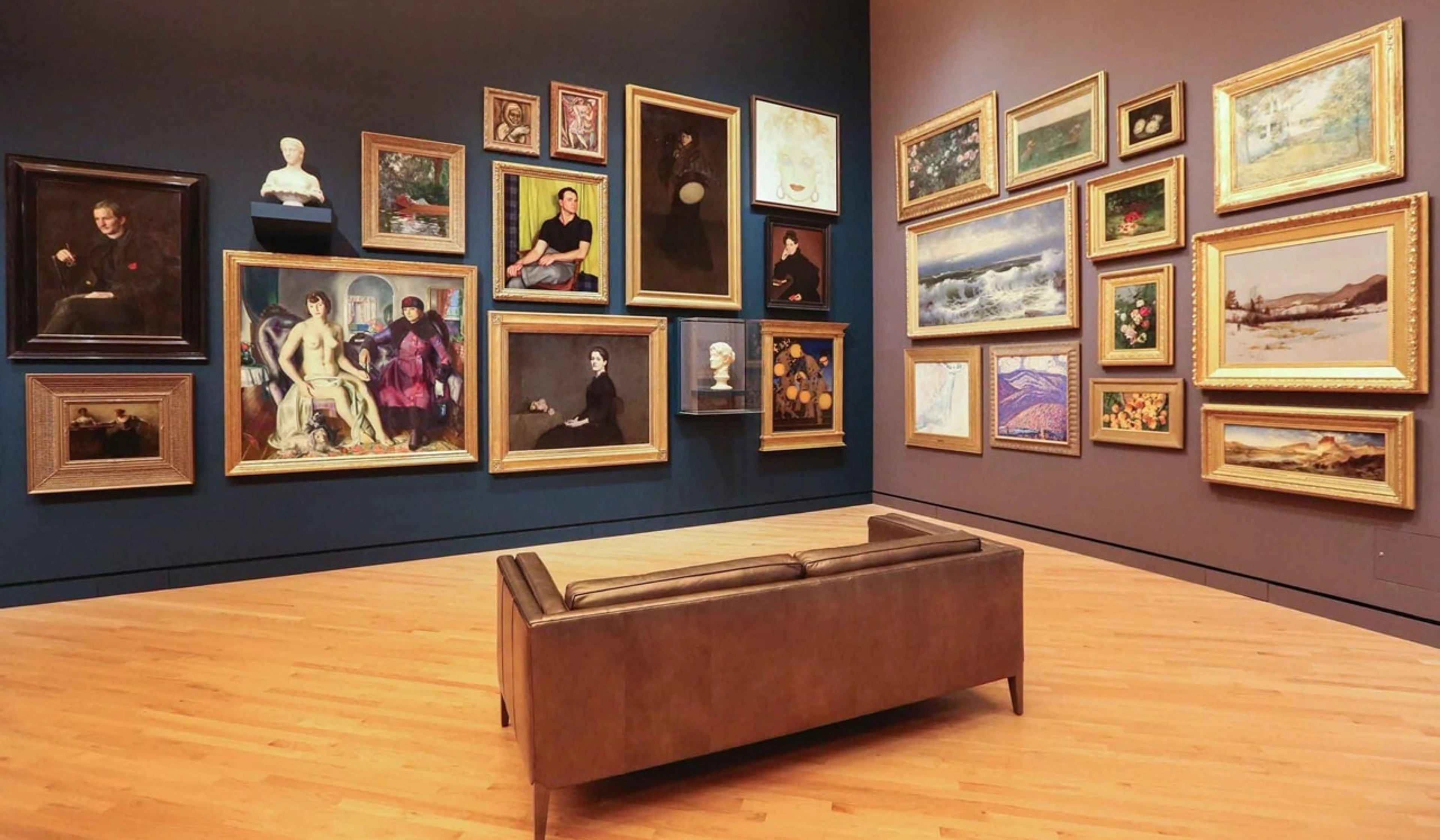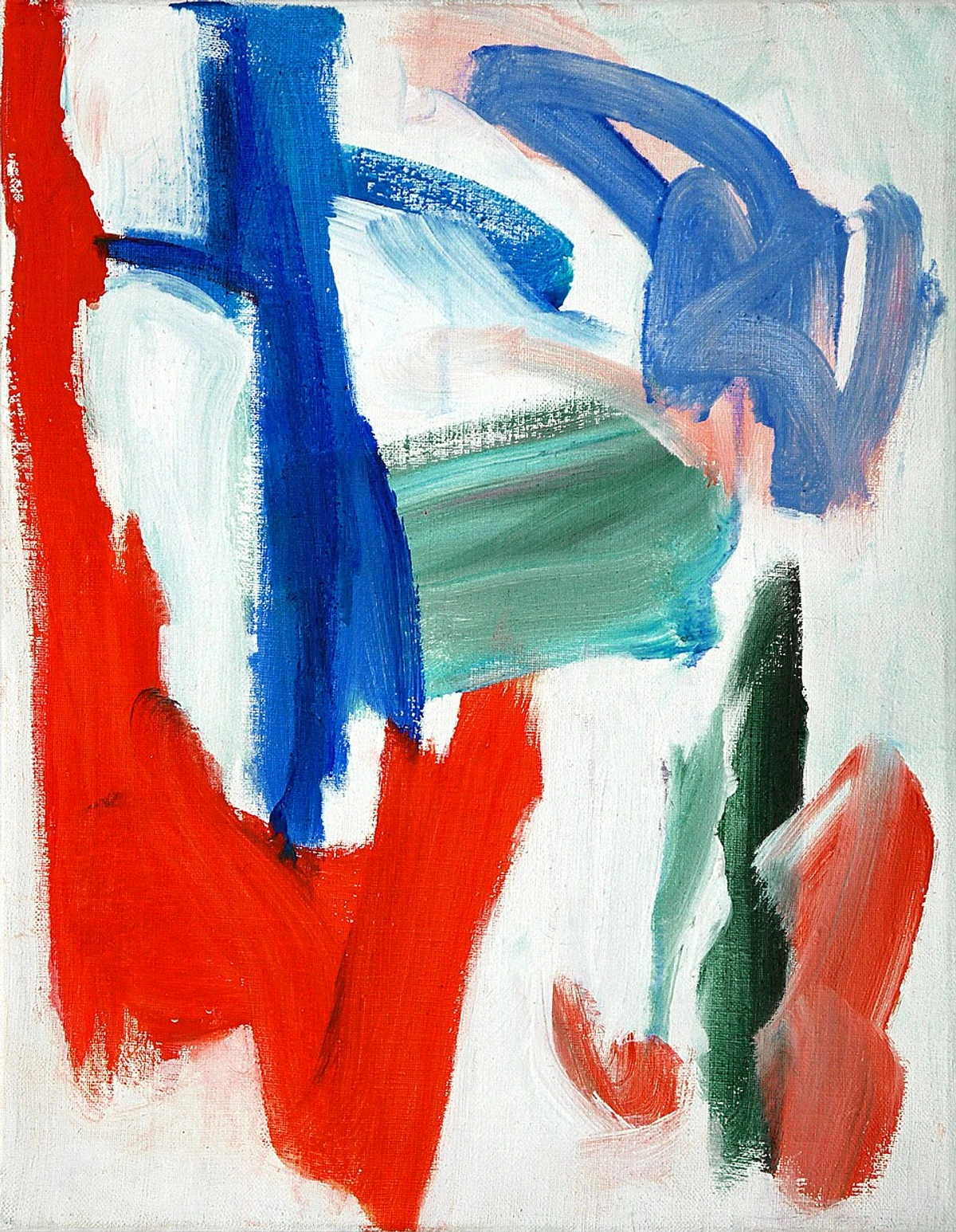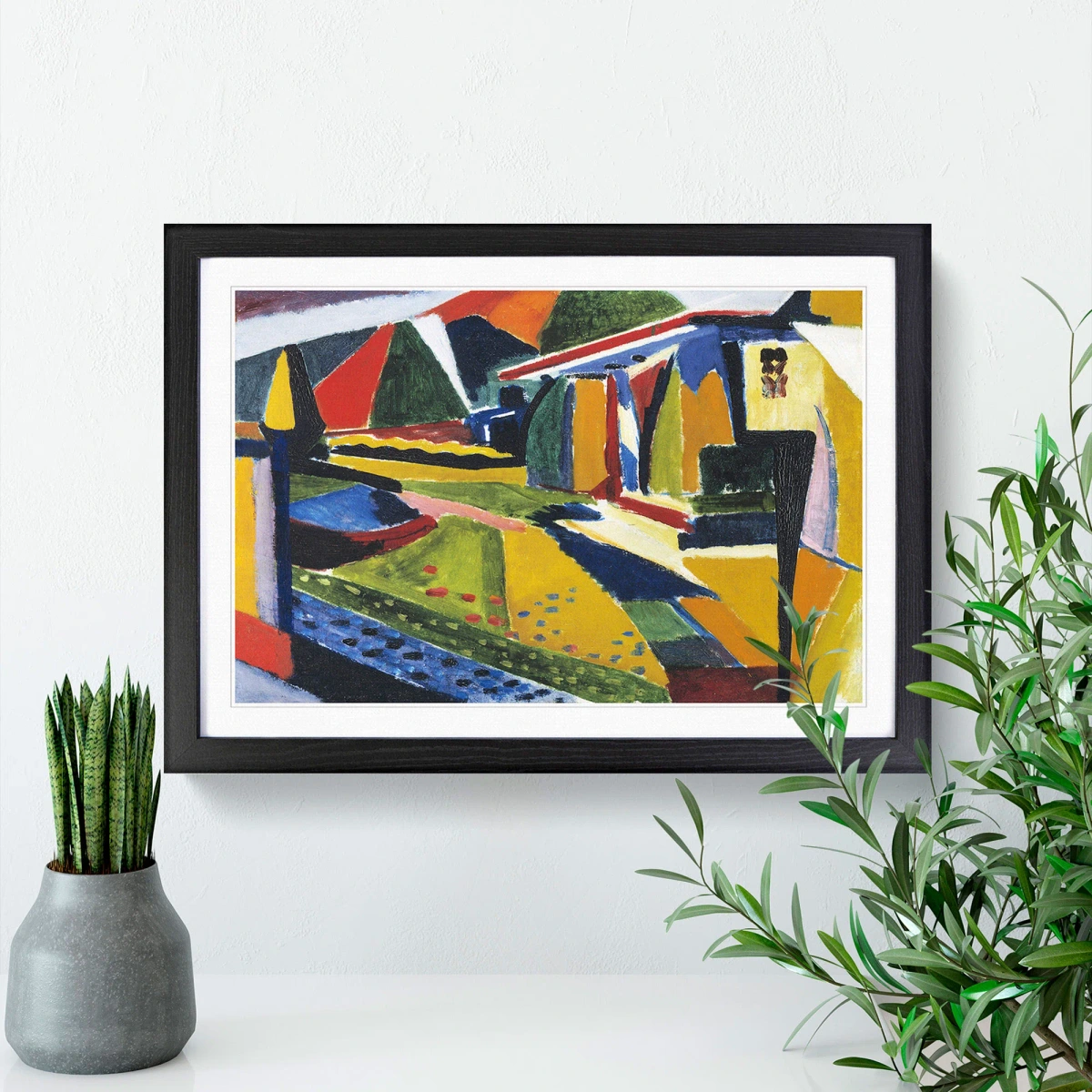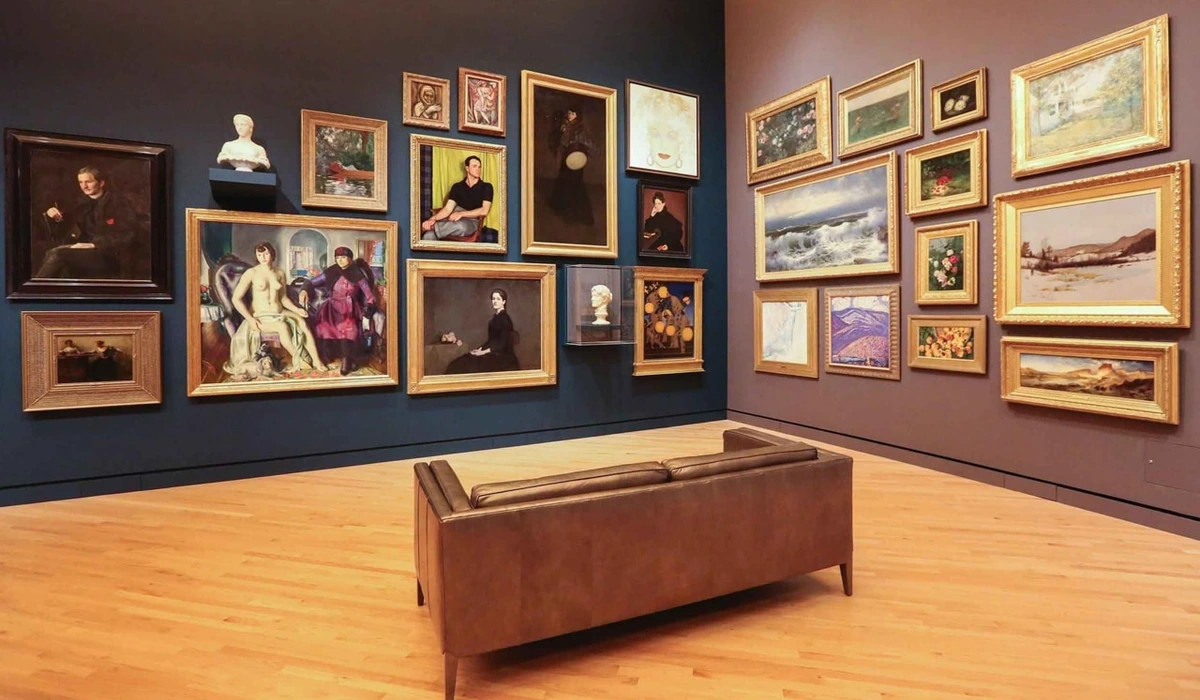
Abstract Art & Minimalism: My Journey to a Soulful Home
Discover how one vibrant abstract painting transformed my sterile minimalist living room into a dynamic, personal sanctuary. Get insider tips to infuse soul into your own space with bold art.
The Unexpected Magic: How a Single Abstract Painting Transformed My Minimalist Living Room
There’s a certain allure to minimalism, isn't there? Clean lines, uncluttered surfaces, a pervasive sense of calm. For years, my living room was a testament to this philosophy. It wasn't just an aesthetic choice; it was a conscious effort to create order, a quiet protest against the everyday chaos that sometimes felt overwhelming. My personal journey into minimalism wasn't just about aesthetics; it was a desperate attempt to gain control, to quiet the relentless internal chatter by imposing a serene, external stillness. I yearned for clarity, for a visual balm to the complexities of a mind that often felt like a tangled skein of yarn. White walls, a sleek grey sofa, a perfectly organized bookshelf – it was a sanctuary of serenity. And yet, if I'm being honest with myself, it often felt sterile. Like a beautifully designed hotel lobby, impressive but lacking the messy, vibrant heartbeat of a home truly lived in. I loved the calm, but I secretly longed for a spark, a whisper of personality that wasn't just another perfectly placed succulent, or, heaven forbid, a fussy throw pillow. What I didn't know then was that this profound transformation wouldn't require an overhaul, but simply the courage to introduce one powerful, and gloriously unexpected, element – a singular splash of audacious expression. Is your own sanctuary feeling a little too serene, a little too… silent?
The Minimalist Canvas: Before the Transformation
My minimalist living room, much like many I've seen in glossy magazines and on Pinterest boards, was a carefully curated void. Every item had a purpose, every surface was pristine. And honestly, the effort required to maintain that pristine state sometimes felt ironic, given the philosophy of ease it was supposed to embody. It was a level of tidiness that would make a surgeon weep with envy, and frankly, it was exhausting. This relentless pursuit of perfection, while initially calming, became a subtle source of anxiety, making me feel more like a gallery curator than a comfortable resident. It felt less like living and more like performing, constantly dusting away the slightest imperfection, always just one misplaced book away from the utter chaos my inner perfectionist was convinced would follow. The mere thought of a fingerprint on the meticulously polished coffee table could trigger a low-level hum of anxiety. This wasn't ease; it was a carefully constructed tension. It was efficient, elegant, and decidedly undramatic. The beauty was in the absence, the negative space that allowed the few chosen pieces to breathe. But after a while, I started to notice that the breathing was a little too quiet, almost imperceptible. It needed a voice, something to anchor the serene expanse. I was in danger of creating a space so perfectly minimal it became forgettable. If you've ever wrestled with the elegant austerity of a modern, minimalist home, you'll know what I mean. Sometimes, we want our spaces to feel lived-in and loved, not just admired. I flirted with the idea of a botanical print, perhaps a tasteful sculpture, or even a more 'decorative' abstract piece – something that merely matched the serene palette. But each felt like a compromise, a whisper when I craved a shout, a polite nod when my soul yearned for a hearty laugh. This quiet yearning for something more led me down a path of exploration, a search for that elusive spark, and I found myself revisiting my understanding of how to really curate abstract art for modern minimalist homes and how art can truly enrich your decorating your home journey. This quiet yearning for something more led me on a search, a journey that would ultimately culminate in a single, transformative discovery.
The Moment of Revelation: Choosing the Right Piece
I spent weeks, maybe months, casually browsing, wondering what could possibly break the spell of my pristine, yet slightly lifeless, living room. My internal dialogue was a frantic debate between my inner minimalist, who whispered warnings of 'clutter' and 'overstimulation,' and my burgeoning art lover, who craved 'expression' and 'passion' – a real spectacle of 'too much' versus 'not enough.' Have you ever felt that internal tug-of-war between order and expression, between what you think your space should be and what your soul actually yearns for? I was overthinking, as I often do, about something that should be intuitive. I knew I needed something bold, something abstract, to counteract the rigid geometry of the space without overwhelming it, a piece that could offer both visual intrigue and emotional depth, much like the contemporary art for home I often seek out. Though I’d always appreciated abstract forms, I often gravitated towards pieces with a more muted, contemplative palette. This piece, however, was different. Its audacious energy and raw, almost primal, brushstrokes resonated with a part of my own artistic spirit – the part that, in my own work, seeks to capture the untamed beauty of emotion through layers and vibrant discord.
Then, I saw it. A single abstract painting. It was a riot of color – vibrant reds, deep blues, and surprising hints of golden yellow, all swirling and colliding with incredible energy. The canvas itself seemed to pulse with an almost tangible texture, the brushstrokes thick and deliberate, hinting at the artist's intense engagement. This wasn't a meek piece; it was a gestural abstraction, brimming with raw emotion, a dynamic dance of forms – a style I deeply admire and often explore in my own artistic artist's journey, seeking to capture the untamed beauty of emotion through layers and vibrant discord. It wasn't 'pretty' in the traditional sense, lacking the saccharine sweetness often found in purely decorative pieces, but it pulsed with life, commanded attention without shouting, and felt… brave. It felt like a piece that knew its own mind, and that resonated deeply with my own philosophy of collecting abstract art: what I look for as an an artist. What truly struck me, beyond the visual spectacle, was a profound sense of recognition. It felt familiar, like a piece of my own fragmented thoughts laid bare, vibrant and unapologetic. It was the audacious splash of rebellion I hadn't realized I was craving.

My usual analytical brain tried to kick in, questioning if these bold colors would clash spectacularly with my carefully chosen neutrals. My inner minimalist, who usually fretted over a single stray crumb, was now contemplating a canvas that looked like a controlled explosion of pigment. What if it screams? I worried. What if it looks like a toddler’s finger painting in my pristine adult space? But something else, a gut feeling, told me this was the one. It promised not just a splash of color but an injection of pure, unadulterated emotion. I've always believed that the emotional language of color is universal, and this piece spoke volumes. For instance, the passionate crimson seemed to represent raw energy, while the deep indigo offered introspection, and the unexpected golden yellow, a jolt of optimism. It reminded me of how I approach the power of color in abstract art: my approach to palette and emotion in my own work – that undefinable pull towards a piece that simply feels right, a true reflection of the my abstract language: decoding the personal symbolism and narratives within my work and emotional connection. The way the reds, blues, and yellows interacted created a powerful tension, a visual dialogue that was both challenging and deeply satisfying, moving beyond mere decoration to a profound artistic statement. This was a piece for a minimalist living room that truly sought art for minimalist interiors with soul.
The Transformation Unveiled: A Symphony of Change
The moment I hung that painting, everything shifted. It wasn't just a painting on a wall; it was an event. The neutral room, which once felt serene, now felt like a perfectly composed backdrop, allowing the art to sing its vibrant song. The passionate reds in the painting seemed to awaken the subtle warmth in my natural wood floors, the deep blues actively brought out the cool sophistication in my grey sofa, and the unexpected golden yellows injected a much-needed jolt of optimism, a feeling I often explore in the psychology of yellow in my art: joy, optimism, and light.
It became the undeniable focal point, drawing the eye immediately upon entering the room. Before, your gaze would just sweep across the expanse, appreciating the quiet. Now, it settled, captivated, on the vibrant conversation happening on the canvas. It provided depth, a narrative, and a powerful sense of presence that had been sorely missing. It tied everything together, giving the minimalist aesthetic a soul it never knew it lacked. This was more than just art; it was a conversation piece, a catalyst for connection, truly creating a focal point: how to position abstract art to transform any room. And this profound shift was just the beginning of how it impacted my daily life. The room no longer just existed; it breathed. But the visual shift was only the beginning; the true magic unfolded in how the room, and my experience within it, began to change on a deeper level.

Beyond Aesthetics: The Emotional and Experiential Shift
What surprised me most wasn't just the visual change, but the profound emotional and experiential shift. Suddenly, my living room felt alive, vibrating with a new energy. It invited contemplation – a quiet moment each morning with my coffee, tracing a brushstroke or noticing a new interplay of colors – and sparked countless conversations. It became a source of mindful moments: how abstract art can be a gateway to inner peace.

Guests would invariably gravitate towards it, their eyes alight. 'Is that a cityscape, or a cosmic explosion?' one friend mused, while another pointed out, 'The way the red meets the blue, it's like a silent argument happening on the canvas!' It became a natural starting point for discussions, breaking the ice in a beautifully unexpected way, revealing a piece of my personality I hadn't known was missing from the space. This was the "messy, vibrant heartbeat" I had unknowingly craved, not a literal mess, but the rich, unpredictable tapestry of shared experience and individual reflection that a truly lived-in home embodies.
For me, it became a source of daily joy, a constant wellspring of inspiration. Each morning, grabbing my coffee, I'd catch a glimpse, and it would spark something within me – a feeling of energy, a reminder of the unexpected beauty in complexity. It transformed the space from a showpiece into a lived-in canvas, a reflection of a home that was both calm and spirited, a true extension of myself. It truly underscored for me that collecting abstract art is a personal journey, not just about filling a void but about enriching your daily life, continuously unfolding new perspectives, much like a good friendship. Even now, years later, I still discover new nuances, a subtle interplay of color or an unexpected texture that makes me smile. It's a reminder that true beauty often lies beyond the perfectly organized.
Your Own Minimalist Makeover: Tips from My Experience
Feeling inspired to inject some of your own unexpected magic into your space? Here are a few tips from someone who accidentally stumbled upon magic, tailored for your own minimalist space, born from the lessons I learned in how to decorate your living room with intention:
- Embrace Contrast (But Thoughtfully) Don't be afraid to introduce a piece that contrasts sharply with your existing palette. A vibrant abstract in a neutral room creates dynamic tension that minimalist spaces often crave. The key is thoughtfully – ensure the colors, while bold, still feel harmonious or introduce an interesting counterpoint, rather than just clashing. For instance, a deep emerald green could anchor a room of soft greys, providing a sense of depth and sophistication precisely because the cool undertones of grey are beautifully complemented by the richness of emerald, creating a sophisticated dialogue. Or, a fiery orange could provide a much-needed jolt against muted blues, offering a glimpse into the healing power of color: how abstract art transforms my space. Or, if you're truly feeling brave, consider a vibrant fuchsia or electric teal against stark white. My initial thought might be 'good heavens, no!', but the unexpected pop can transform a purely functional space into something playful and arresting, proving that sometimes the 'wrong' color is exactly the right kind of delightful chaos. Sometimes, the most beautiful harmonies are born from a little bit of delightful discord.
- Size Matters (More Than You Think) For a single, impactful piece, go big. A large abstract painting can anchor a room, becoming a gravitational center. Too small, and it might get lost in the minimalist expanse, looking more like an afterthought than a focal point. Think about the wall it will live on – does it fill a significant portion? Also, consider the overall scale of your room and its furniture. A grand piece above a large sofa feels balanced, whereas a tiny canvas would be swallowed whole. To visualize, you can use painter's tape or cut out paper templates to outline the potential dimensions on your wall. For very expansive walls, consider a compelling diptych or triptych, or even a thoughtfully curated gallery wall of smaller abstract pieces to create a cohesive statement, rather than just one overwhelming canvas. Consider this carefully, as knowing how to choose the right size art for your space is crucial for impact.

- Let the Art Lead (Don't Force It) Choose a piece that truly resonates with you, not just one that 'matches' your decor. If you love it, you'll find a way to make it work. The beauty of abstract art is its versatility; it adapts to the emotions it evokes rather than prescriptive themes. For example, a piece dominated by melancholic blues might be balanced by warmer, textured throw pillows, turning what might seem like a somber tone into a contemplative oasis. Or, consider a bold, heavily textured piece in a predominantly smooth room; the textural contrast can be as impactful as color, adding a tactile dimension that invites touch and closer inspection. Trust your own aesthetic instincts, even if they diverge from current trends or what you think a 'minimalist' space should look like. After all, curating joy: integrating colorful abstract art into your home decor is about your feelings. If you're looking for a piece that speaks to you, explore the art available for sale on my site.
- Lighting is Key Proper lighting can dramatically enhance your abstract piece, bringing out its textures and colors, making it truly pop. Consider accent lighting, like a carefully placed picture light or recessed spotlights, not just to illuminate, but to create subtle shadows that add depth to brushstrokes and reveal nuances you might otherwise miss, transforming a flat canvas into a dynamic sculpture of light and shadow. After all, the way you light and position abstract art can make all the difference, transforming a simple display into a captivating experience, whether it's in your home or even in a den bosch museum setting.
- Integrate Textures and Accents While abstract art introduces color and form, don't forget the power of texture and subtle accents to make a minimalist room truly feel lived-in and layered. Think natural wood elements, a plush wool rug, linen drapes, or a few metallic accents in a lamp or vase. These tactile details provide visual interest and warmth, grounding the bold statement of your abstract art without adding clutter. They create a dialogue with the art, allowing it to pop against a rich, yet understated, backdrop.
- Trust Your Gut (It's Your Space) Ultimately, your home is your sanctuary. Don't let trends or perceived rules dictate your choices. If a piece of abstract art speaks to your soul, even if it feels a little 'out there' for your minimalist aesthetic, trust that feeling. That's where the real transformation happens. It's about finding your reflection: how abstract art can be a mirror to your inner world.

My Conclusion: A Single Stroke of Brilliance
My journey from a beautifully restrained, albeit somewhat soulless, minimalist living room to a vibrant, emotionally resonant space was, unexpectedly, catalyzed by a single abstract painting. It proved that sometimes, the most profound transformations don't require an overhaul, but simply the courage to introduce one powerful, unexpected element. Less is indeed more, but as I discovered, that 'more' can be an explosion of color and emotion on a canvas, echoing the very essence of abstract art for every room: curating flow and feeling in your home. This artwork became more than just decor; it became a silent companion, a constant source of wonder, reminding me daily that life, much like art, thrives on unexpected connections and the courage to embrace color, even in the most serene settings. So, I urge you, if your space feels like it's holding its breath, perhaps it's waiting for its own moment of unexpected magic. It's a beautiful, messy truth that has spilled into other areas of my life – a reminder to seek out vibrancy, to embrace the unexpected, and to trust that even in the quietest of spaces, a single bold stroke can ignite an entire universe. After all, everyone's artist's journey is different, but the destination of a truly soulful home is universally appealing. If your space is whispering for its own splash of audacious expression, perhaps it's time to explore the art available for sale on my site and discover your own unexpected magic.
Frequently Asked Questions (FAQ)
Can any abstract painting work in a minimalist space?
While many can, the most effective abstract paintings for minimalist spaces often feature bold colors or strong compositional elements that provide a clear focal point without being overly complex or 'busy.' The key is balance – a piece that stands out while still feeling integrated, often with a sense of intentionality and quality of execution in its creation, rather than just random splatters. Conversely, overly figurative abstract pieces, or those with very busy, repetitive, and potentially overwhelming patterns, might challenge the minimalist aesthetic more than complement it. Look for art that commands attention through its presence, not by demanding it with too much visual noise.
How can I ensure abstract art doesn't look 'out of place' in a minimalist setting?
The secret lies in intentionality and balance. Instead of just hanging a piece, consider how its colors, forms, and energy interact with the existing elements of your room. Think of it as a dialogue: the art speaks, and your room provides the thoughtful response. You can integrate it by pulling out a subtle color from the painting into a throw pillow, or by complementing its dominant shapes with the lines of your furniture. Most importantly, give it space to breathe; don't overcrowd the wall or the room around it. The minimalist aesthetic thrives on careful curation, and your abstract piece, even if bold, should feel like a deliberate, cherished addition, not an afterthought.
How do I choose the right size?
For a statement piece, opt for a size that occupies a significant portion of your chosen wall. A common guideline is that the art should be about two-thirds the width of the furniture it hangs above (e.g., a sofa). When in doubt, larger is often better for creating impact in a minimalist setting, especially if the piece commands attention. Don't be afraid to go big; a well-chosen large piece can transform a wall into an experience, anchoring the entire room.
What if I don't 'get' abstract art?
You don't need to 'get' it in an intellectual sense to appreciate it. Abstract art is often about feeling, emotion, and personal interpretation. Instead of asking 'What does it mean?', try asking 'What does this piece do to me?' or 'How does it make me feel?' Focus on how the colors, shapes, and textures resonate with you. If it evokes a positive emotion or sparks curiosity, that's all you need. Sometimes, demystifying abstract art is simply about letting go of the need for literal representation and embracing the visual experience, allowing it to resonate with your own inner world.
What are some common mistakes people make when introducing abstract art into a minimalist space?
One common mistake is choosing a piece that's too small, making it look lost rather than impactful. Another is picking art solely based on matching colors rather than emotional resonance or visual interest – if it doesn't speak to you, it won't truly transform the space. Also, remember to give the art room to breathe; don't overcrowd the wall with too many small pieces or place it too close to other decorative elements. Finally, don't be afraid to experiment! Your first choice might not be perfect, and that's part of the journey.




